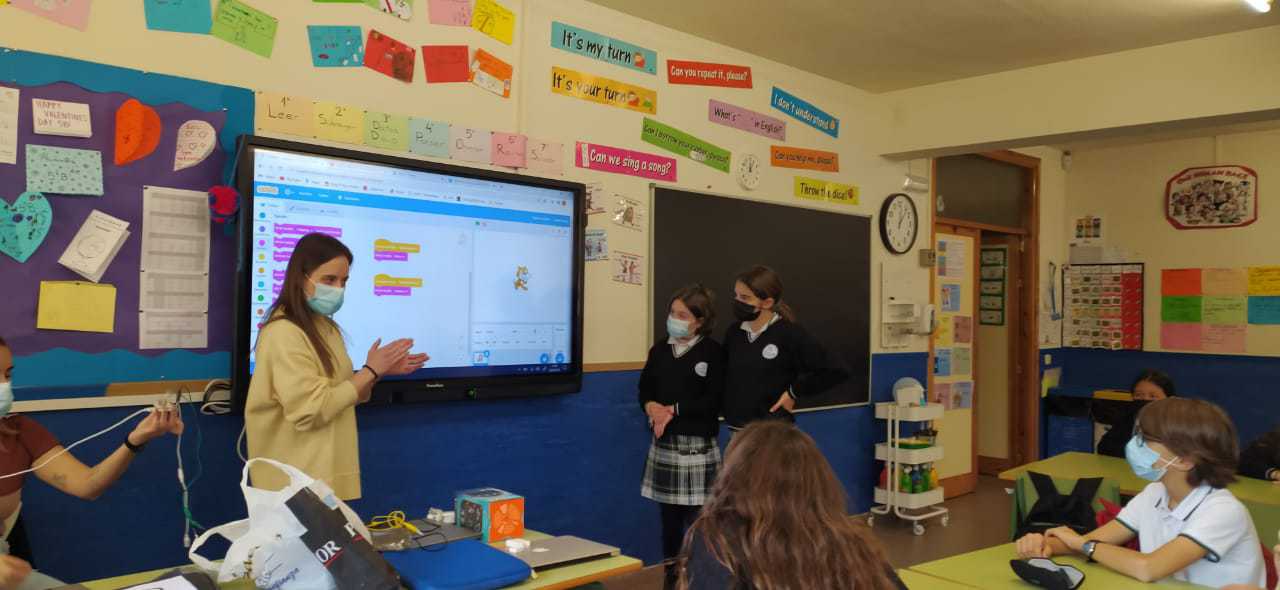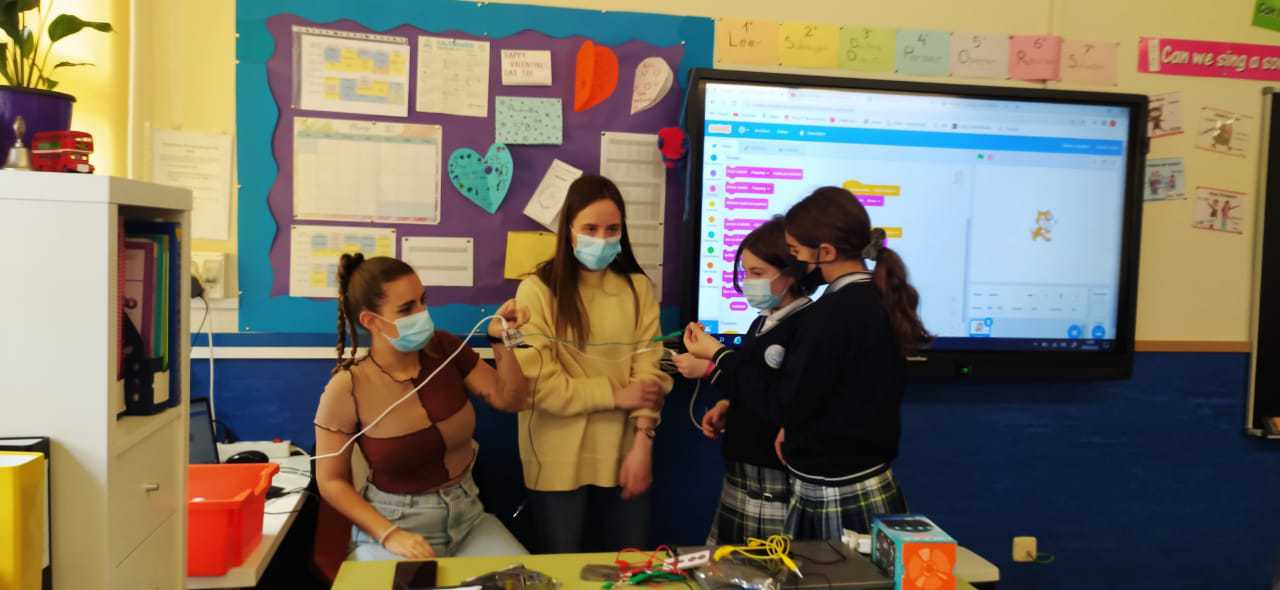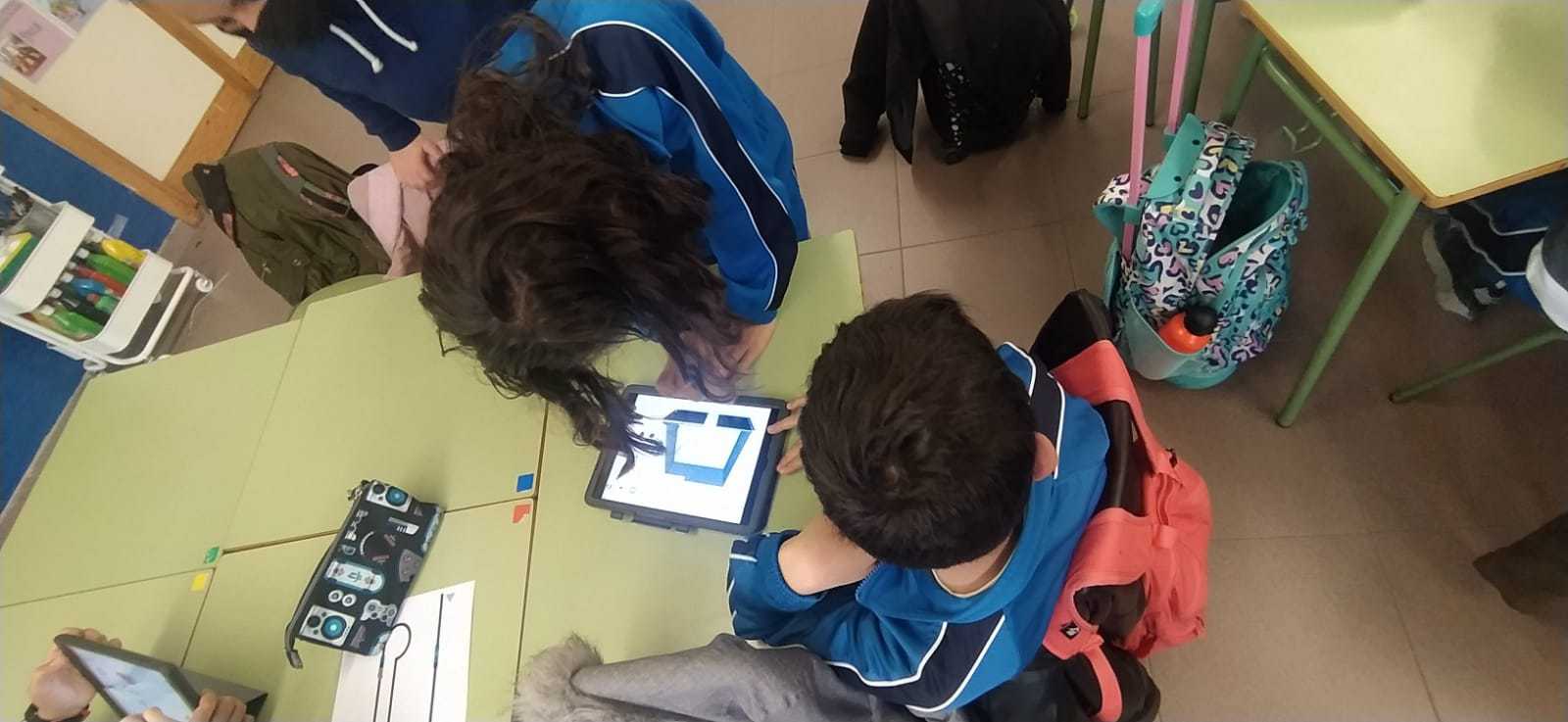The pilots of the results developed in IO2 of the RoboGirls project in Spain have been carried out in five different sessions, in three schools.
In total, nine classes participated, with an average of 30 students per class, and a total of seven teachers of different subjects. The students were between 10 and 18 years old. Different workshops were held: Scratch: basic commands and making music with Makey-Makey, Tinkercad and Ozobot.
The methodology has been face-to-face, the workshops have been given in person in the mentioned institutions. In each classroom there was an average of 30 students.

Three different workshops or learning lessons were held: Scratch and Makey-Makey commands, Tinkercad and Ozobot. In order to be able to carry out all the lessons, the five sessions were divided into two blocks.
The first block consisted of learning the different Scratch commands. To do this, a deduction game was played in which the students had to position the different commands in their respective categories. Subsequently, the Makey-Makey board was presented, with which they would begin to put into practice some of the commands they had learnt. With this board, the students played at being music producers, programming sounds in Scratch and then linking them to different pieces of fruit. So that when the students played a piece of fruit, the sound linked to it would be played, creating a sequence of sounds that made sense and served as the basis of a song.

During the second block, the students were divided into groups to create a 3D figure with Tinkercad. While the large group was doing this task, group by group they went through the Ozobot workshop, programming with colours different roads for the robot to complete a circuit. In one of the classes, with the older students, an Ozobot race was held. To make it more interesting, each group had to create a road for the group next to them. The aim of the activity was for each group to create the most complex and slowest circuit, with the winner being the team that reached the finish line first.
The comments received, both from teachers and students, have been very positive. Even without having all the answers to the evaluation questionnaires, as some of them were very young students, we can affirm that the workshops have helped them to see robotics as something more attractive and closer to their skills.
We can also confirm that the impact on the children, but especially on the girls, has been very positive. They have understood that robotics is also for them and that they are capable of carrying out the same activities, whether easy or difficult, as their classmates.




